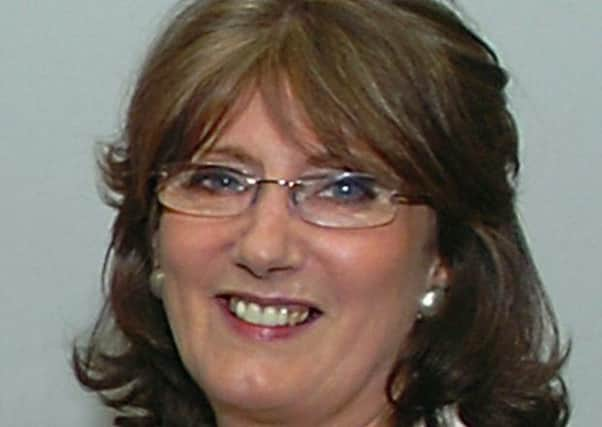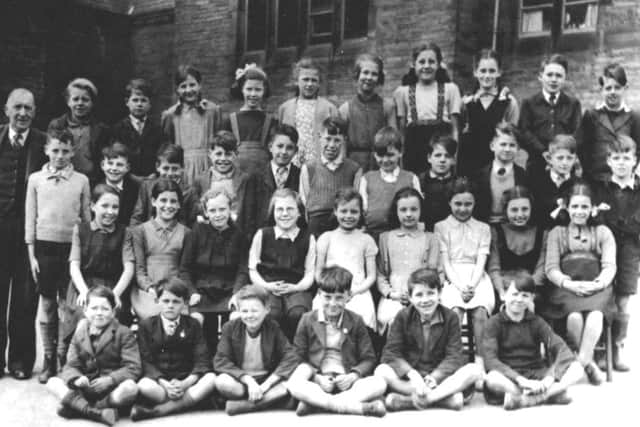The Nostalgia column with Margaret Watson


The children in the photograph above would have plenty to tell us because they were born just before or during the Second World War.
They grew up knowing the deprivations war brings with it, food rationing, gas masks air-raid sirens and listening to bombs dropping.
Advertisement
Hide AdAdvertisement
Hide AdOne of the little boys who is pictured in this photograph of Knowles Hill Road, School, Dewsbury Moor, Peter Gibbard, experienced more than most.


He was only a little boy when in 1941 a German bomb dropped on his home in Old Bank Road while he and his family were taking refuge in the cellar.
Miraculously they escaped unharmed, but the story of the bombing never appeared in a newspaper because such incidents were censored by the War Office.
This week, Peter cannot be censored, and he tells us about that night, as part of his childhood memories of Dewsbury.
Advertisement
Hide AdAdvertisement
Hide AdPeter was one of a number of readers who kindly answered my appeal for more readers to share their memories of childhood.


Here is what he writes:
“When Dewsbury was bombed in 1941, the sirens went off and the guns on the top of Caulms Wood, where Hanging Heaton Golf Club is now, started banging away,
“We all went down into the cellar of our house in Old Bank Road with outside toilets adjoining. There was a small shop just below our house.
“I remember coming out of the cellar into what had been the kitchen, The tall black fireplace was laid on the floor, and there was soot and glass everywhere.
Advertisement
Hide AdAdvertisement
Hide Ad“The windows had gone, the ceilings had collapsed, and we had to go and stay with grandma at the end of Caulms Wood Road. What was her house is now the extension to the Crown Public House.
“My other grandma lived on what was known as The Flatts, in Granville Street, just above Wellington Road Railway Station.
“After a short time my parents were given a council house on Moorside Avenue, Dewsbury Moor, (number six).
Later we moved to number three, when I was eleven because I had two younger sisters born after me and we needed more bedrooms.
Advertisement
Hide AdAdvertisement
Hide Ad“The roads were still being made when we first went to live there, and I remember watching the steam roller working, and also talking to the night watchman when the workmen had gone home. He looked after the work site and also to keep the red paraffin lamps lit all night. All he had to sit on was a little seat in a very small shed with a fire brazier to keep him warm.
“Looking out of the back door of number six you looked towards Huddersfield, and I can remember one night watching a Flying Bomb which had flames coming from it, and when the flames stopped it dropped towards Huddersfield.
“When we were living at number six, my mum used to put us under the table when the sirens went off. There were no cellars in these houses.
“The local grocery shop in Moorend Lane was Mr Massey’s, and we used to take our ration books there to get food. We also tried to grow some food ourselves in the garden, such as potatoes and cabbage etc.
Advertisement
Hide AdAdvertisement
Hide Ad“Mr Hinchcliffe was the owner of the local chippie where we could buy a cone of chips for one old penny. This was in the days when there were 240 pennies to the pound.
“At the Dewsbury Moor Council School in Knowles Hill Road, the teachers I can still remember were Mr Broughton, who is on the photograph, and Miss Popplewell.
“There were coal fires to keep us warm in the schoolroom with fire guards round them, and we got small bottles of milk daily. When it was very cold the ice in the milk pushed the cardboard tops off.
“The school dinners came to the school daily in a van, and I can recall it being potatoes and turnip mixed together and cabbage, almost every day with sago pudding to finish. To this day, I cannot stand turnip.
Advertisement
Hide AdAdvertisement
Hide Ad“I remember one day someone running up Moorside Avenue shouting “WARS OVER....WARS OVER” at the top of their voice, I think it was a woman, I would be around nine years old.
“I also remember workmen putting the old gas mantle street lamps back on. They had been removed because of the war.
“I moved to Victoria Central Boy’s School in 1947. It was a great school with a gymnasium, metal workshop and woodwork room.
“There was also a music room where Mr Walsh taught us to play the violin and cello etc, and a large hall where we had concerts for the public to come and watch.
Advertisement
Hide AdAdvertisement
Hide Ad“Some of the teachers I remember in the orchestra were Mr Wilson, headmaster, Mr Walsh, Mr White, orchestra conductor, Mr Clegg, Mr Harris who always wore a bow tie, Mr Bland, Mr Stead and Mr Burns, clarinet player.
“This school had its own kitchens where a Miss Mellor was the cook, and we had some very good meals.
“We had to travel by bus from Dewsbury Moor to get to school and back.
“Some of the things I remember were having to walk on planks of wood to cross the road to catch the bus home when the River Calder flooded Aldams Road, The bus stop to go home was near the bridge where you go over the river to ASDA today.
Advertisement
Hide AdAdvertisement
Hide Ad“Also when it was foggy, I remember the conductor walking in front of the bus to help the driver keep the bus on the road, Fogs then were very bad because of all the coal fires. When you blew your nose it was black.
“I left school in 1951 to start work at Porrit and Underwood Decorators in Wakefield Road, just below where we had been bombed out in 1941.”